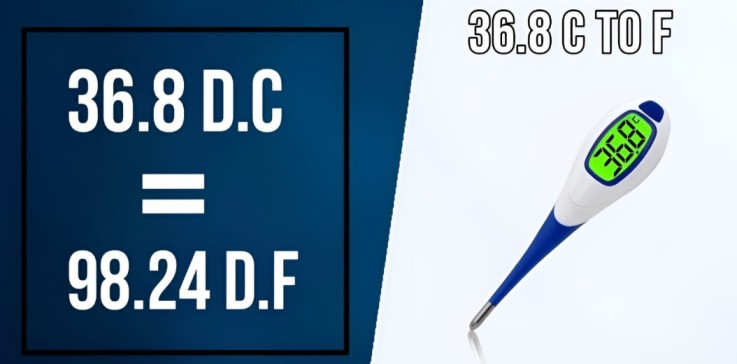Know in detail about Immature Fruits and White Skin

Different types of fruits appear in the world with a rich tapestry of colors, flavors, and textures. Each fruit has its trip from the bloom stage to the harvest. This journey can have a deep effect on its appearance and taste. In this journey, Immature fruits hold a special place, often showing a distinct feature – white skin. Now we want to delve into the charming world of immature fruits and white skin.
The temperature, humidity, lack of nutrients, or natural growth patterns – these are the many factors responsible for contributing to the development of immature fruit in plants.
On the other hand, to understand the genetic makeup of unripe fruit and white skin, scientists are involved in designing more efficient methods for their production and harvesting.
Moreover, this knowledge can help breeders to develop new strains for better commercial production.
What is called Immature fruit?
Those fruits that are intentionally picked at an early stage and harvested before reaching the mature stage of development is called immature fruit.
This type of fruit is intentionally used before the matured stage for various reasons, including preservation, culinary purposes, and commercial viability.
Reasons for immature fruits have white skin:
There are several factors of immature fruit that make its color white. Some of the reasons are depicted here—
Insufficient pigmentation:
Green chlorophyll and red, yellow, or orange color carotenoid pigments are not synthesized in the early stages of the fruit’s life cycle. That is why the immature fruit tends to become white or pale coloration.
The high percentage of water:
The immature fruits always have a higher percentage of water than the matured ones. This excess water can dilute any pigments further contributing to the white or pale colorations.
Thin skin of immatured fruit:
Immature fruits possess more thin skin than matured ones. Thinner skin allows light easily into the immature fruit giving the fruit a pale appearance.
White Formation and carbohydrates:
Another vital composition of fruit is carbohydrate. Some Fruit store starch as a source of energy for future growth and development. The carbohydrate is converted into glucose by some enzymes. As a result, it can occasionally give something a white or unclear look.
Function of Chlorophyll for white skin :
The chloroplasts give most plants their green color. It plays an important role in giving the color of the fruit. In the early stages of fruit development, chloroplast levels are not sufficient to give the main color of the fruit. It causes the appearance of paler tones, including white color.
The Waxy Coating of Fruit:
Some fruits have a waxy natural covering for protection. The light can be reflected diffusely due to the waxy surface of the fruit. It can be the reason for immature fruits with a thicker wax covering may seem white.
The effect of different environmental factors :
The different environmental factors also have an impact on the fruit’s color. It may be caused by low levels of sunshine, and ambient temperature difference.

Different stages of developing the fruit from the flower:
1st stage (flowering):
Flowering is the first stage of a fruit’s life cycle. When the plant’s flowers open, pollination occurs. Then it transforms into the formation of small, developing fruit structures.
2nd stage (Immaturity):
After pollination, the fruit enters the immature stage. In this stage, the fruit is small, and green and may not reach its full shape and size. Also, the seeds are not developed properly in this stage.
3rd stage (Ripening):
When the fruit undergoes significant changes in color, texture, and flavor, it enters into the ripening stage. Then it becomes more attractive and edible.
4th stage (matured):
Generally, the maturity stage of the fruit may come during and after the ripening stage. In this phase, the fruit has reached its full shape, size, and prominent color. Now it is ready for consumption and its seeds are fully developed and can be reused for the next plantation.
5th stage (Over ripening):
The fruit begins to go to the final stage after maturity. Then it leads to overripe and tends to decay.
Immature fruit related:
Definition:
Those fruits are to be called “Immatured” which have not reached their full level of ripeness. Generally, these types of fruits appear white, comparatively small, and more harder than mature fruit of the same variety.
Appearance:
This type of fruit generally appears slightly green in color or light yellow. They are harder than fully ripe fruits and have a light color overall.
Examples:
There are several examples of immature fruits for their characteristics of white or pale appearance.
- Green papaya
- Baby eggplant
- Green tomatoes
- White patches and nectarines
- Uses:
The immature fruits are used in different ways—
- For baking— It will take more time to soften them up.
- making preserves
- Making different juice
- Chutneys and salsas
- Salads
- Pickling – immature cucumbers or lemons are often referred to as pickling.
Health benefits of consuming immature fruits:
Sometimes, immature fruits may offer health benefits similar to their mature counterparts. Also, they can offer vitamins, minerals, and dietary fiber. The quantity of nutrient content may vary depending on the specific fruit and its stage of development.
How we can recognize the immature fruit?
In general, immature fruits are typically smaller in size, firmer than matured ones, and have whitish skin. It means that the fruit has not yet reached full maturity. It is still young and developing. Hence its color or texture has not changed that we typically recognize in mature fruit.
Most people may safely consume immature fruits. However, those with particular medical problems have to take precautions before consuming it. For that particular case, it is advised to speak with a healthcare provider.
Commercial Importance of Immature Fruits and White Skin :
The charm of white or light-colored fruits commercially remains a secret thing. Amazing and distinctive looks can produce an attraction to consumers. Hence these immature fruits frequently end up in specialized shops and place in a remarkable position in the market.
As compared to the Shelf Life of immature fruit with the ripe counterpart, immature fruit has a longer shelf life than its ripe one. The supply chain uses this characteristic of fruit to ensure the availability of fruit for a long time in the market.

Genetic analysis regarding immature fruits and white skin:
It is more interesting to understand the characteristics and development of immature fruit and white skin. Genetic analysis of parental lines is become increasingly important. Some types of fruits are genetically inclined to have a white or pale color. The fruit kingdom is more different as a result of these genetic exceptions
Scientists can analyze the DNA sequence of both parent plants by using genetic markers. Scientists have invented how to determine the gene’s contributions to traits such as immature fruit development and white skin coloration.
It has been noticed that there are two types of mutations, namely frameshift mutation and single base insertions. These mutations can cause immature fruits and white skin in plants.
The abnormal development of fruit and white coloration on the skin can occur due to frameshift mutations.
It has been observed that the expression of the APRR2-gene is associated with fruit peel color. It plays a role in the development of immature fruit with white skin.
Proteins are generally the end product of genes. To determine the function and impact of genes, the cellular location of a protein plays a crucial role.
The researchers have gained a better understanding of how they contribute to the development and mutation process by studying the locations of gene products in immature fruits and white skin.
Conclusion:
The world of immature fruits and white skin is a witness to the variety and sophistication of nature. The fruits gathered before reaching full maturity, show special characteristics that make them valuable in culinary traditions worldwide. The use of all immature fruits (green papayas to white peaches) in dishes adds a layer of texture and flavor that can promote a meal to new heights. The connection between the immature state of fruits and their white skin enhances our appreciation of their role in global cuisine. Hence, next time we encounter an immature fruit with white skin, savor the moment and enjoy the complicated interplay of nature’s flavors and colors.
Frequently Asked Questions
Is there any adverse effect after eating immature fruit?
It depends on the fruit and the specific stage of immaturity. Generally, immature fruits are safe to eat. But its palatability and culinary uses can vary depending on the fruit. The taste of some immature fruit may be bitter or have a different texture. However, in general, immature fruits are not toxic and can be consumed after suitable preparation such as by cooking, pickling, or other methods that reduce bitterness.
How to preserve the immature fruit for a long time?
Generally, immature fruits have a shorter shelf life as compared to matured ones. Their higher percentage of water content and thin skin make them more perishable. They can be used for pickling or any other methods to extend their storage life.
Is there any special nutritional advantage of immature fruit?
Some immature fruits have a higher percentage of water content as compared to mature fruits and also have lower sugar content. So thirsty and diabetic people can consume a small quantity of such immature fruit.
What is the relation between ethylene and fruit color?
Ethylene is a natural plant hormone. It has a dual role in fruit development and color. It can stimulate ripening in some fruits. On the other hand, it might cause a change in color without affecting ripening.
Related post:



